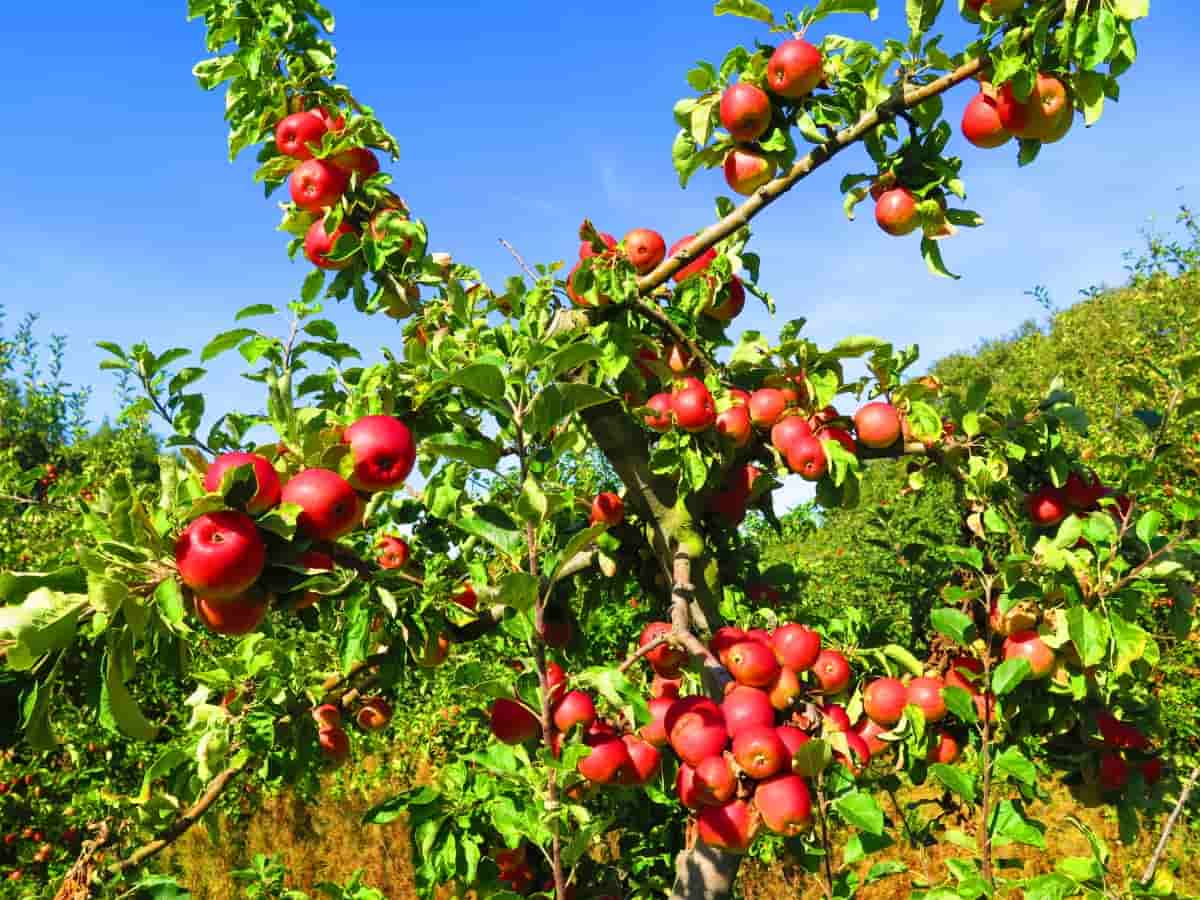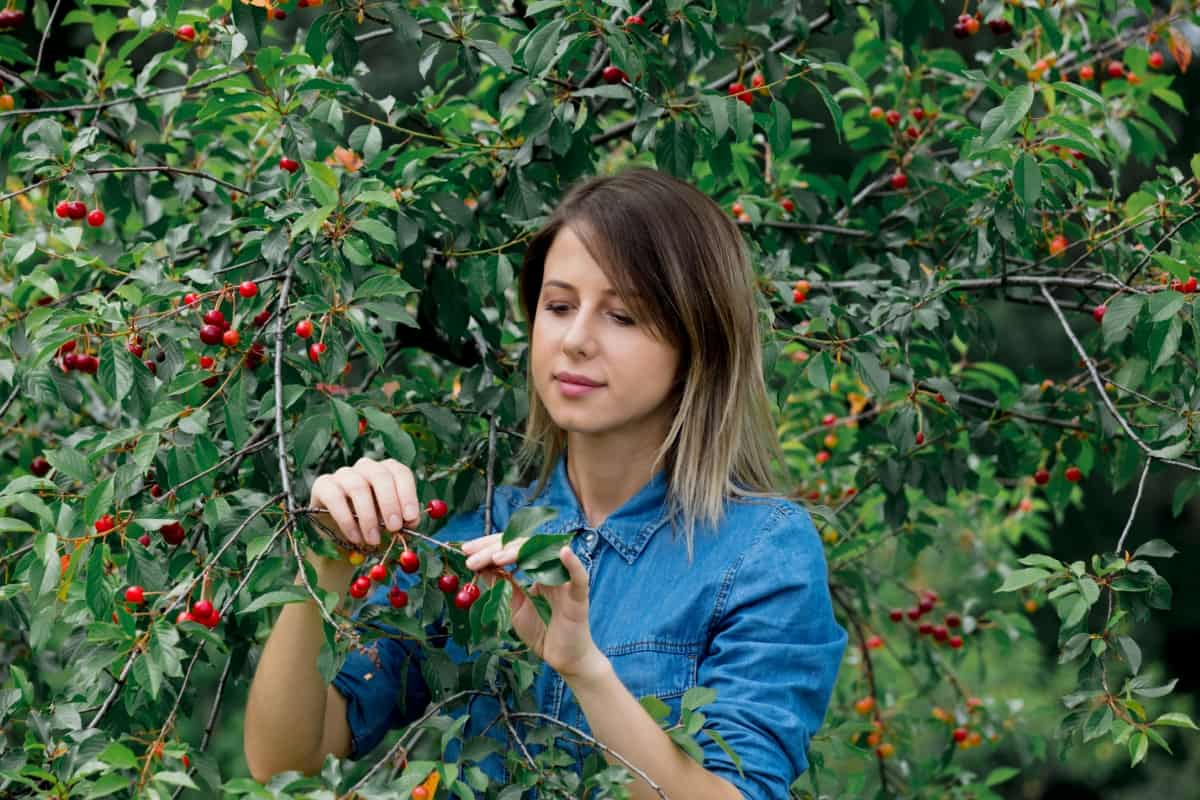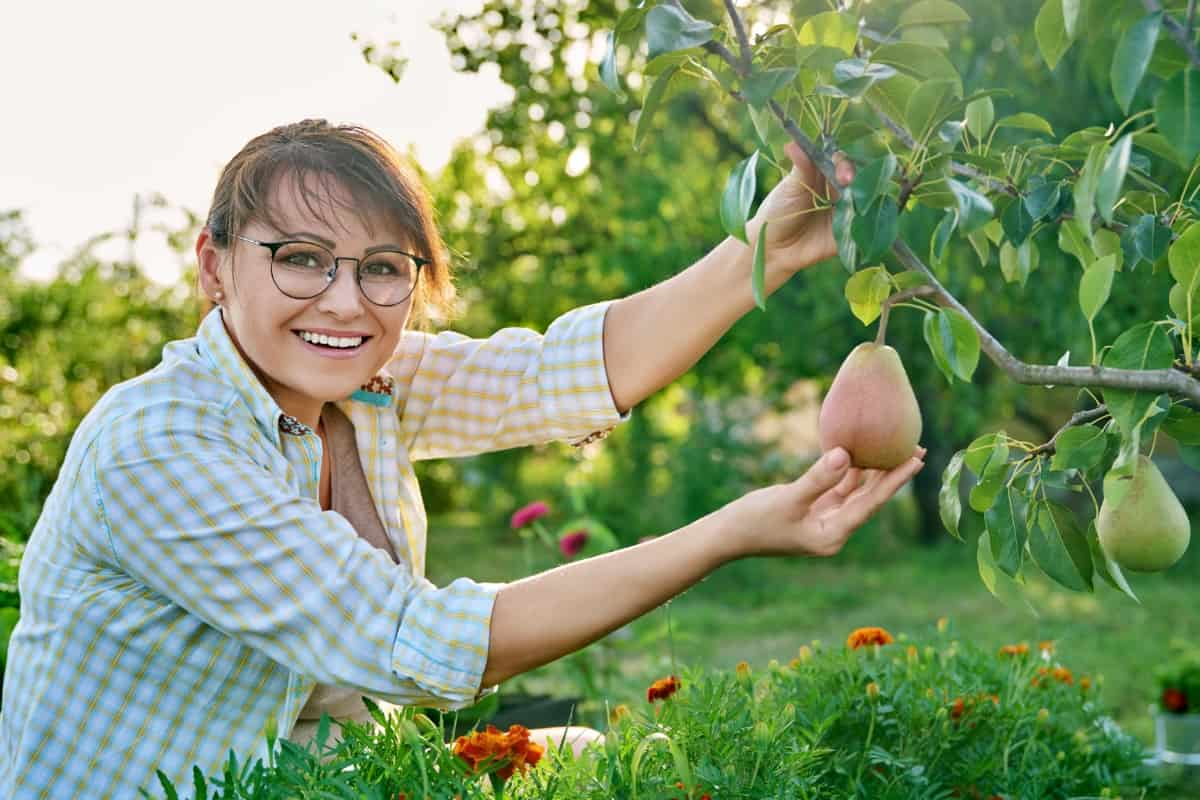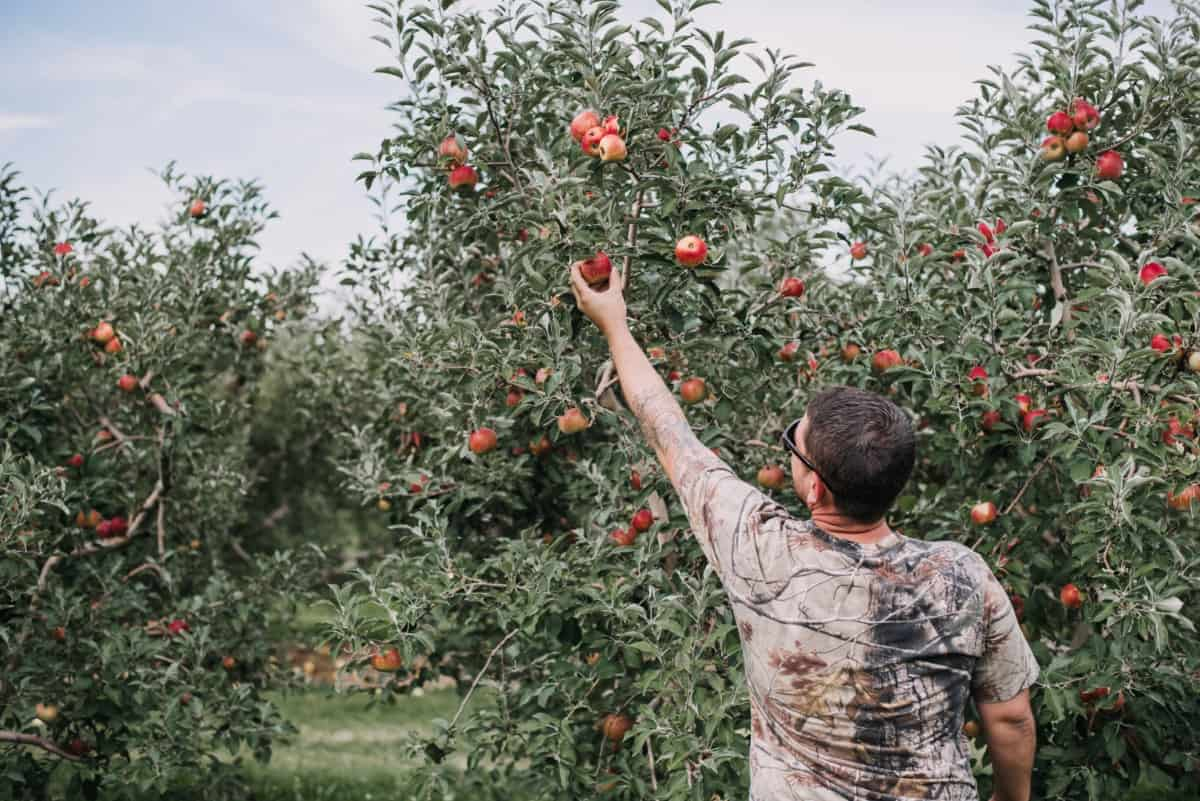New York offers a diverse climate, making it a favorable place for various fruit trees to thrive. The question often arises, “What fruit trees can you plant in NY?” the answers are as diverse as the state’s landscapes. The easiest fruit to grow in New York includes apples, cherries, and pears. While many wonder if they can grow oranges in New York or peaches, the answer is nuanced.
While oranges are a challenge due to the state’s colder winters, peaches, on the other hand, have varieties adapted to the state’s conditions. Upstate NY, often colder than its southern counterpart, has its list of favorites like apples and berries. Plums, too, find a favorable environment in New York. This article offers an extensive guide to fruit planting, keeping the New York climate in mind.
Understanding the New York Climate for Fruit Tree Cultivation
New York state is predominantly characterized by a humid continental climate, which brings cold winters and warm summers. The state’s varying topography, including mountainous regions upstate, means a mix of microclimates exists. Such diversity has enabled a broad range of fruit trees to thrive. Apples, cherries, pears, plums, and even certain varieties of peaches can be grown effectively across different parts of the state.
Factors to Consider Before Planting Fruit Trees in New York
Before planting fruit trees in the Empire States, soil type, sunlight availability, and local pests must be considered. Properly draining soil ensures root health, while adequate sunlight aids fruit maturation. Gardeners should also be aware of pests like apple maggots or plum curculios that might affect their yield. Choosing fruits like apples, pears, cherries, berries, and even peaches, which have varieties resistant to common pests, can be beneficial.
Easiest and Best Fruit Trees to Grow in New York Climate
Given the state’s climate, apples are a top choice, especially varieties like Honeycrisp and Gala. Pears, particularly Bosc and Bartlett, come second, thriving in New York’s soil. Cherries, both sweet and tart, are another favorite, with Bing and Montmorency leading the charge. Plums, especially European varieties, flourish, and peaches, with cold-hardy varieties like Reliance, can also be grown successfully.

Best Fruit Trees for Containers in New York
Container gardening can be a boon for urban gardeners or those with limited space. Apples, especially dwarf varieties, adapt well to pots. Cherries, particularly the compact kinds, are another suitable choice. Pears, like the Seckel variety, are manageable in containers. Plums, with their shallow root system, can also thrive in pots. Lastly, when pruned correctly, certain varieties of peaches can be grown in containers, offering a burst of summer freshness.
Easy-To-Grow Fruit Trees for New York Gardeners
Apples remain the easiest fruit to grow in New York for those who prefer minimal gardening effort. Pears, with their hardy nature, are another low-effort fruit tree. Cherries, especially tart varieties, demand little attention. Plums, being resilient, require minimal care, and peaches, while slightly more demanding, can yield rewarding harvests with just a bit of attention.
In case you missed it: Easiest and Best Vegetables to Grow in South Carolina: Planting Guide for Winter, Summer, and Spring

Top Fruit Trees for New York Backyards
Transforming backyards into mini orchards is a trend many New Yorkers are embracing. Apples, given their popularity and ease of growth, top the list. With their vibrant blossoms, Cherries add beauty and taste to any backyard. Pears, with their tall stature, offer both shade and fruit. Plums, with their diverse varieties, can be a delightful addition. And peaches, with their fragrant blossoms, can elevate any backyard space.
In case you missed it: Easiest and Best Vegetables to Grow in Alabama: Planting Guide for Winter, Summer, and Spring

Low-Maintenance Fruit Trees for New York Landscapes
Apples are a sure-shot winner for landscapes where minimal maintenance is the goal. Pears, once established, require little care. Cherries, especially the hardier varieties, can thrive with minimal attention. Plums, given their adaptability, are another low-maintenance option. Peaches, while requiring some pruning, can be a relatively low-effort choice for the diligent gardener.
Drought-Tolerant Fruit Trees for New York Gardens
While New York isn’t typically prone to droughts, it’s wise to consider drought-resistant varieties. Apples, especially those grafted onto drought-resistant rootstocks, are a top pick. Pears, given their deep root system, can tolerate dry spells. Cherries, especially sour varieties, exhibit moderate drought tolerance. Plums, being versatile, can withstand periods of low moisture. Peaches, if watered deeply and infrequently, can adapt to drier conditions.
Disease-Resistant Fruit Trees for New York Orchards
To ensure a fruitful yield, it’s prudent to consider disease-resistant varieties. Apples, especially those like the Liberty variety, show strong disease resistance. Pears, like the Magness, resist most common diseases. Cherries, particularly the tart types, exhibit resistance to many diseases. Plums, especially those bred for resistance, can ward off common ailments. With specific resistant varieties, peaches can be a smart choice for orchards aiming for minimal chemical intervention.
New York Fruit Tree Planting Calendar
| Month | Recommended Fruit Trees |
| March-April | Apples, Pears |
| May-June | Cherries, Peaches |
| July-August | Plums |
| September-October | Apples (late varieties) |
| November-December | Preparing soil for next season |
In case you missed it: Easiest and Best Fruit Trees to Grow in Tennessee: A Fruit Planting Calendar for Tennessee

Selecting the Right Rootstock for New York Soil
In fruit tree cultivation, the choice of rootstock plays a significant role in determining the tree’s vigor, size, and adaptability to soil conditions. With its mix of loamy, sandy, and sometimes clayey soil, choosing a rootstock that ensures good anchorage and disease resistance is crucial in New York. Apples, for instance, can be grafted onto rootstocks like M7 or MM106 for medium-sized trees well-suited to the state’s conditions.
Pears can be matched with Quince rootstocks for compatibility with New York’s soil. Cherries can be paired with the Colt or Mahaleb rootstocks, known for their hardiness. Plums often grafted onto St. Julian A rootstock, adapt well to the state’s diverse soil types. Being slightly more particular, Peaches thrive best on Bailey rootstock, which offers both vigor and adaptability.
Harvesting and Storage Tips for New York Fruits
After months of anticipation, harvesting is a rewarding phase for every gardener. Knowing the right time and technique to harvest ensures the best flavor and longevity of the fruits. Apples, for instance, are best picked when the ground color changes from green to yellow or red, depending on the variety. Pears should be harvested when mature but not fully ripe and can be ripened off the tree. Cherries should be plucked when they achieve full color and firmness.
Plums are best picked when they yield slightly to a gentle squeeze, indicating ripeness. Juicy and fragrant peaches should be harvested when they come off the branch with a gentle twist. After harvesting, storage plays a vital role. While apples and pears can be stored in a cold, dark place for extended periods, cherries, plums, and peaches are best consumed fresh or can be stored in the refrigerator for short-term use.
Conclusion
New York, with its varied climate and topography, offers many fruit cultivation opportunities. From the crunchy apples of upstate NY to the juicy peaches of its warmer regions, the state boasts a fruit palette as diverse as its landscapes. While challenges like choosing the right rootstock or combating diseases exist, the rewards, in the form of fresh, home-grown fruits, far outweigh the efforts.
New Yorkers can transform their backyards, patios, and balconies into fruit-bearing havens with the right knowledge, diligence, and a passion for gardening. Whether it’s the joy of biting into a freshly picked apple or anticipating a peach tree’s first blossom, fruit gardening in New York is a journey as delightful as the destinations – the fruits themselves.
- Ultimate Guide to Ossabaw Island Hog: Breeding, Raising, Diet, and Care
- Ultimate Guide to Juliana Pig: Raising Facts, Size, Diet, Care, and Lifespan
- Raising Lleyn Sheep: Disadvantages, Price, Uses, Characteristics, and Care
- Ultimate Guide to Meishan Pig: Breed Facts, Breeding, Raising, and Care
- Ultimate Guide to Teacup Pigs: Raising, Diet, Lifespan, Cost, and Care
- Guide to Raising Poll Dorset Sheep: Facts, Profile, Characteristics, Uses, and Care
- Ultimate Guide to Bighorn Sheep: Characteristics, Diet, Lifespan, Breeding, and Lifecycle
- Ultimate Guide to Raising Katahdin Sheep: Farming Facts, Breed Profile, Uses, and Care
- Ultimate Guide to Raising Oreo Cows: Belted Galloways Farming Facts, Profile, Uses, and Care